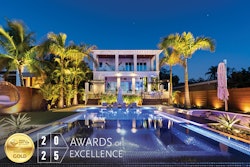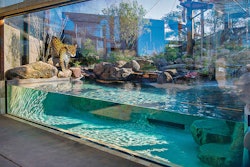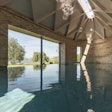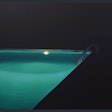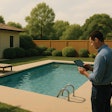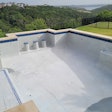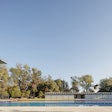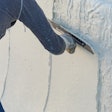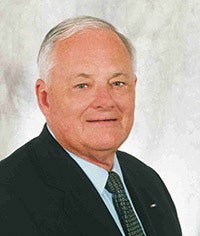
The Wall Street Journal article “Getting Stuck in the Slow Lane,” published July 25th, 2014, indicated that swimmers competing in the 2013 World Championships in Barcelona, experienced a current in certain lanes of the pool. The article noted that competitive lanes on one side of the pool produced better times in one-directional races than the competitive lanes on the other side.
The article states that research and analysis by Joel Stager and Chris Brammer indicates both men and women at the competition experienced a 1 percent faster event time swimming in lanes 5-8 when compared to their performance in lanes 1-4.
As someone with more than four decades of experience designing and engineering competitive swimming pools, it is my professional opinion that the article takes something that is straightforward and simple, basic hydraulics, and makes it seem far more complicated and mysterious than it really is.
On the most basic level, I’ve always seen the work of the engineer in relationship to the extreme efforts and achievements that take place in the pools we design. Excellent coaches working with outstanding athletes develop fast swimmers. Engineers design competition pools with “fast water.” Together, they make new Olympic and world records and give us the marvelous spectacle that is competitive swimming.
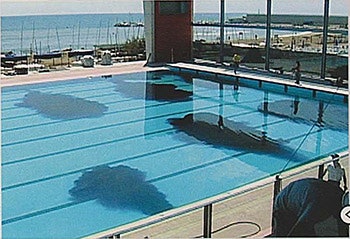
At all levels, from beginners to elite athletes, swimmers deserve to compete in pools that at the very least provide an even playing field. The ultimate goal for those engineering these bodies of water is to create vessels that enhance athletic performance.
The good news is that proper hydraulic design of a 50-meter competition swimming pool boils down to basic engineering; it is not rocket science. It is something that has been properly accomplished many times. A competition swimming pool that has a water current that influences swimming times is totally unsatisfactory for swimming competition.
If the swimming pool circulation system is not turned on, there can be no water current in the pool. For a water current to exist in a swimming pool, water must be either flowing into or out of it. A properly designed competition swimming pool does not have any water current when operating. (Note: I am not familiar with the design of the competition swimming pool used in the 2013 World Championships in Barcelona; i.e., its area, depths, volume, turnover and circulation system design.)
Before 1984 (the XXIII Olympiad/1984 Olympic Games in Los Angeles), the Fédération Internationale de Natation (FINA), swimming’s international governing body, required that during competitions, swimming pool circulation pumps be turned off. Swimmers can swim faster through water that is still (has no current) and has a smooth, undisturbed surface. Waves and splashes slow swimmers down. For this reason, the lane lines in competition swimming are loaded with plastic devices that reduce waves and splashes, i.e., turbulence generated by the swimmers. For the swimming lanes on the sides of the pool, a properly designed gutter also absorbs swimmer-generated turbulence.
When water is flowing into the swimming pool gutter of sufficient capacity, wave splashback from the pool wall into the pool is reduced, thereby making the pool water surface smoother, which results in a faster pool. Gutter capacity is also a factor. A properly sized gutter system with sufficient capacity to contain all circulation system flow capacity as well as all the wave splash generated by swimmers will reduce or eliminate the possibility of any wave forces being returned into the pool and applying a counteracting force on competitive swimmers.
In 1984, with the help of the Los Angeles Olympic Organizing Committee, I (as the designer of the competition swimming pool in the XXIII Olympiad) was able to convince FINA that the swimming times would be faster if the swimming pool circulation pumps continued to run during the event. After careful examination of the 1984 Olympic swimming pool with the circulation system running, FINA determined that there was no flow-induced current in the pool. In 1984, for the first time, swimming pool circulation pumps operated during the Olympic swimming competitions (Note: In the 1984 Olympic Games in the competition swimming pool, 11 World Records and 37 Olympic Records were set, more than all other venues in the 1984 Olympics).
The 1984 Olympic swimming pool has 120 non-directional floor inlets. All of the circulating water flowing into the pool was non-directional through the floor inlets, which creates an upwelling effect, i.e. the water enters the pool through the inlets in the pool floor and exits the pool at the top via the gutter. All the circulation flow from the floor return inlets is directed up and equally distributed throughout the pool. The total circulation system flow is directed equally over the pool perimeter edge into the gutter system.
The main drains were turned off during all the competition events to get maximum flow over the pool perimeter and into the gutter and to prevent any vortex current to form as a result of a concentrated suction force at the drains.
If a current exists in a competition pool, it is created in two ways: by either water entering the pool or by water leaving the pool. In the case of the 1984 Olympic swimming pool, the circulation system’s flow rate was 2,424 gallons per minute (gpm). Each of the 120 non-directional floor inlets has a flow rate of only 20.2 gpm. The 1984 Olympic pool circulation flow rate of 2,424 gpm equates to 342 cubic feet per minute. The 342 cubic feet per minute divided by the area of the pool (12,968 square feet) means that the circulation flow distributed evenly across the pool floor is traveling upward at a speed of .0263 feet per minute or .316 inches per minute. The velocity of this current is too insignificant to influence swimming times in the pool. In addition, the flow and force of this current is from the pool floor to the pool surface and not counter to the direction of competitive swimmers.
Unlike non-directional floor inlets, swimming pool wall inlets create a water current across a pool from the pool wall they are mounted on. If flush-mounted swimming pool wall inlets exist in a competition swimming pool, they create a water current directly across the pool (See Figure 1).
If the wall inlets are not hydraulically balanced (i.e., there is more water flow from one side of the pool), then one side of the pool will likely be slower, meaning swimmers on this side of the pool must overcome this water current force when compared to swimmers on the other side of the pool.
When wall inlets are operating, there is always directional flow away from the pool wall.
Water leaves a competition swimming pool by the perimeter overflow system (gutters) and main drains (if used). The main drains (if used) are at the bottom of the deep end of the pool may produce eddy currents or vortexes as a result of the suction current velocity on the surface of the pool (anti-vortex main drain covers were invented to mitigate this effect).
I recommend turning off main drains during competition events to negate the possibility of an eddy or vortex produced by the main drains. I also recommend turning off main drains during competition events because any excess water going into the gutter will raise the height of the weir and thereby make the gutter more efficient at absorbing waves and splashes.
If the perimeter overflow system is perfectly level, and the pool inlets induce no water current, there should be no water current induced by the perimeter overflow system. There is a flow of water going into the gutter, but if the gutter is level around the entire perimeter of the pool, then there will be no water current in any particular direction from water flowing into it.
If the perimeter overflow system is not level, however, pool water will not flow out evenly into the gutter around the pool’s perimeter; more water would flow out where the gutter is lower and less water would flow out where the gutter is higher. This would create a water current towards the gutter’s lowest point(s). If this is the case, the lanes at the edge of the pool would be more heavily influenced than the lanes in the center of the pool.
According to the WSJ article, during the 1,500-meter freestyle event in the 2013 World Championships in Barcelona, split time analysis indicated that swimmers in Lanes 5-8 swam faster in one direction and the swimmers in Lanes 1-4 swam faster in the opposite direction. This clearly suggests that an eddy, a circular water current, or a Coriolis/vortex effect existed throughout the pool. The article does not mention anyone looking into the possibility of an eddy, vortex, or Coriolis effect in the pool due to the main drains or circulation system return current influence.
It is possible that main drains (without anti-vortex covers) were operating during the Barcelona event in relatively shallow water and creating an eddy, vortex, or Coriolis effect in the pool. It is also possible that a water current in the pool was caused by wall inlets and/or a perimeter overflow system (i.e., gutter) that is not level.
The article states that an instrument is being designed to detect water currents and will be tested at the European championships in August 2014 in Berlin. If the new instrument detects a current in the competition pool used for the championships, there will not be any time to redesign and make any major revisions to the pool. If a current is found to exist in the pool, the quickest way to eliminate it is to shut the circulation system off during the competition events, which would mean that the competition swimming pool would not have fast water.
In summary, preventing currents in competition pools is relatively simple when designers and engineers apply basic hydraulic principles.
William N. Rowley, Ph.D., P.E. is president of Rowley International, Inc. and a Life Fellow of the American Society of Mechanical Engineers


























